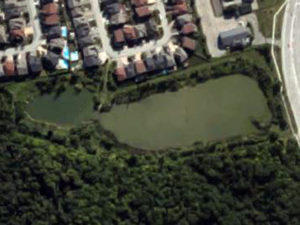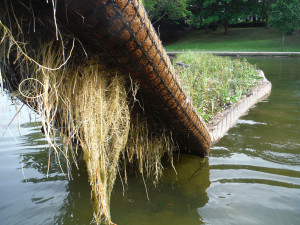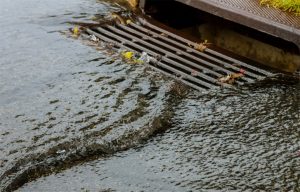Best Management Practices for Stormwater Retention Ponds
Best Management Practices (BMP) for restoring water quality in stormwater retention ponds has never been as important as it is now. The challenge is to treat incoming polluted water as it  flushes through streets and parking lots, ensuring that the water leaving the retention pond is in a better state than when it arrived. We have developed practical, ecological and time tested Best Management Practices to help improve stormwater retention ponds from Coast to Coast.
flushes through streets and parking lots, ensuring that the water leaving the retention pond is in a better state than when it arrived. We have developed practical, ecological and time tested Best Management Practices to help improve stormwater retention ponds from Coast to Coast.
Best Management Practice #1 – Lake Bottom Aeration
Here are some of the benefits:
- To mix the water column allowing oxygen at the sediment level and throughout the water column, helping beneficial bacteria to consume nutrients in the water.
- To lift water to the surface where natural UV light reduces and kills some pathogens.
- To add much needed oxygen that supports the life cycle of beneficial bacteria that exists in the biofilm. Beneficial bacteria do the hard work of consuming unwanted, excess nutrients.
- To help prevent the build-up of organic sediments, eliminating the costly and disruptive process of machine dredging.
Chose from solar or electrical powered aeration systems. Our team can help you with design, layout and pricing for a Standard or Custom CanadianAir Aeration System.
Best Management Practice #2 – Biomatrix Floating Islands
Here are some of the benefits:

- To help naturalize the pond, by providing a platform for native plant species to become established.
- To provide shade and habitat for juvenile fish.
- To purify the water as plants uptake soluble nutrients such as Nitrogen and Phosphorous from the water column into the plant.
- To establish habitat for billions upon billions of beneficial bacteria. The beneficial bacteria live in the biofilm that covers the root mass of the plants. Treatment is immediate and happens IN the water.
Here is more information’s on the Floating Island design and process; we can help you save time and money.
Best Management Practice #3 – Bio-augmentation with Bacterius® Beneficial Bacteria
Here are some of the benefits:
- To speed up the process of clarifying water, reducing odours, removing nutrients, reducing algae blooms, improving habitat for fish and invertebrates.
- To improve the aesthetics of the water and reduce Public complaints to water managers.
- To slow down the flushing of pollutants in the watershed and allow in situ treatment.
- To prevent algae growth and compete with pathogens in their habitat.
- To improve overall pond health.
Request a consultation with one of our technical advisors for treatment schedules, dosage as per your budget and we will make sure you will get good results using our Bacterius® products.
Preventing nutrients from reaching water bodies
 Aside from the three previous Best Management Practices, we cannot say enough about preventing nutrients from reaching in the water bodies within our communities:
Aside from the three previous Best Management Practices, we cannot say enough about preventing nutrients from reaching in the water bodies within our communities:
- Reduce or eliminate use of fertilizers in the watershed.
- Reduce lawn cutting 3 meter around a storm water basin, if possible.
- Reduce surface area of lawns requiring maintenance and replace with shrubs, trees, food gardens etc.
- Prevent if possible, Canada geese from accessing the water.
- Manage dog droppings in the watershed.
- Plant indigenous shrubs and trees along the shoreline of the ponds to create shade and reduce water heating.
In conclusion, it is always important to know the system dynamics and interactions between elements in a pond to be able to solve the water quality problems. If you follow the 3 best management practices for stormwater retention ponds (aeration, floating islands and beneficial bacteria) the water quality of your retention pond will improve significantly. But for sure, it is always better to prevent than to cure.
Related Article:
- Case study how stormwater management with Bacterius® products from Canadianpond.ca.
-
Fruit and Vegetable Safety: Optimal Management of Irrigation Water
-
Control FOG & Odour in Sewage Lift Stations and Grease Traps